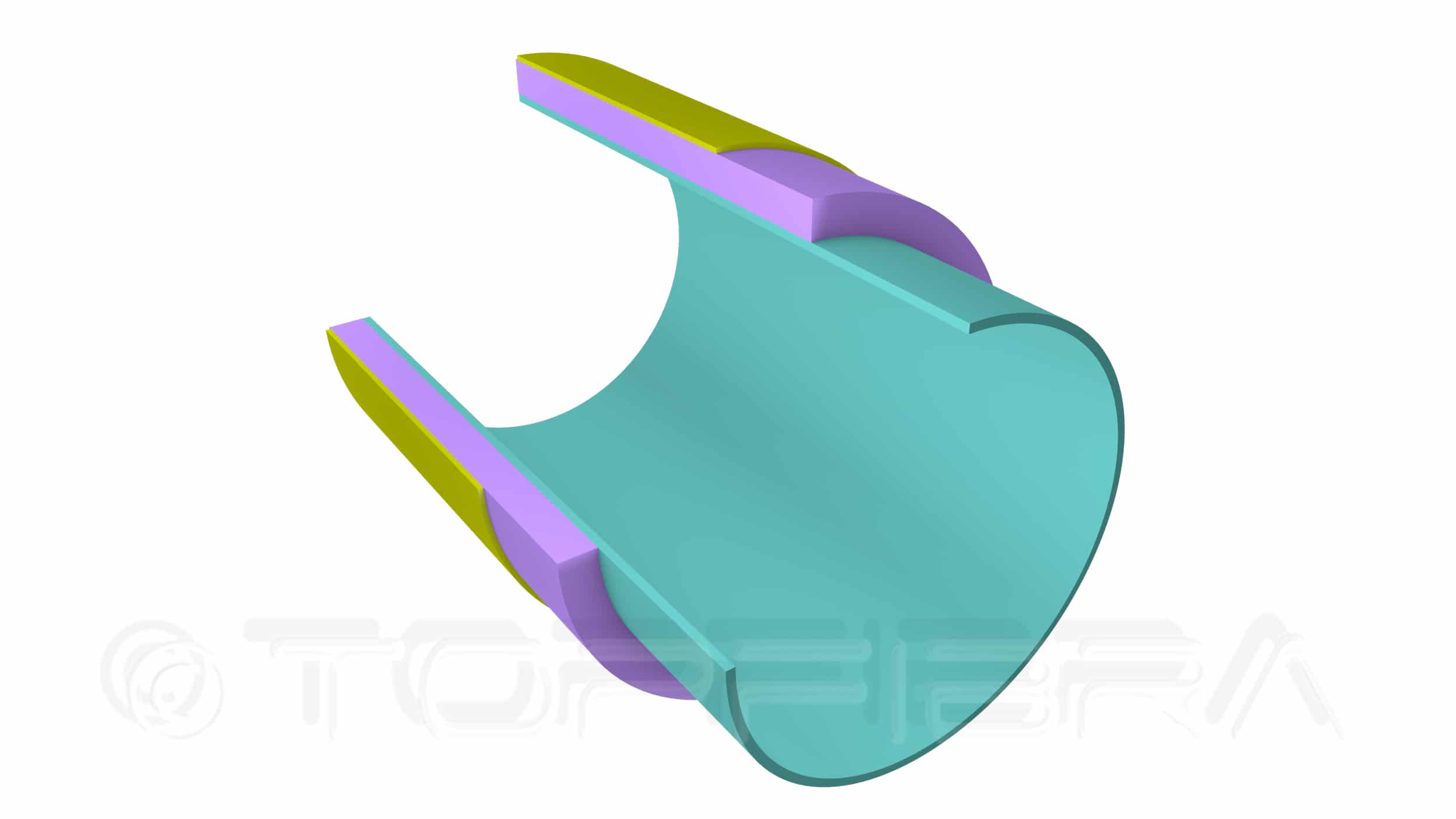The GRP pipe wall, or to be more precise, the RTRP/RPMP pipe wall (Reinforced Thermosetting Resin Pipe/Reinforced Plastic Mortar Pipe) consists of three layers, perfectly adherent to one another and each having different characteristics and properties in relation to their function.
The three layers are:
– internal layer;
– mechanically resistant layer;
– outer layer.
Each layer requires the use of different reinforcements and resins. Let’s look at each of them in more detail.
Internal layer
The liner or the chemically resistant layer is the internal layer of the pipe; it is in direct contact with the conveyed fluid. This layer has the function of guaranteeing the maximum resistance to chemical corrosion and securing the impermeability of the whole pipe, due to the:
- the higher content of resin;
- the special kind of resin used;
- the special kind of glass reinforcement used.
- the liner is generally made out of two monolithic sub-layers. The standard liner thickness is about 0.8÷1.2 mm, which can, of course, be increased when needed.
Mechanically Resistant Layer
It is also called “the structural layer”.
This layer has a high content of reinforcing glass fiber that guarantees the mechanical resistance of the whole pipe to stresses which happen due to the internal and/or external pressures; external loads, which are the result of handling and installation; soil loads; traffic loads; thermal loads; beam loads; etc.
The structural layer is obtained in multiple different ways, depending on the manufacturing technology.
Outer Layer
The topcoat or the gel coat, is the outer layer of the pipe, having a minimum thickness of 0.2÷0.3 mm or more, depending on the design requirements. Normally, it consists of pure resin, with a UV inhibitor added in order to protect the pipe from sun exposure.
In case of severe exposure conditions, i.e. due to aggressive soils or a very corrosive environment, the gel coat can be reinforced. The outer liner can also have a white or colored pigment on request.
Are you interested in getting more information about the GRP pipe wall composition or have any questions or concerns?
Feel free to contact us by clicking on the button below and we will help you out!
You can also read about GRP pipes are check if you know everything about them.

